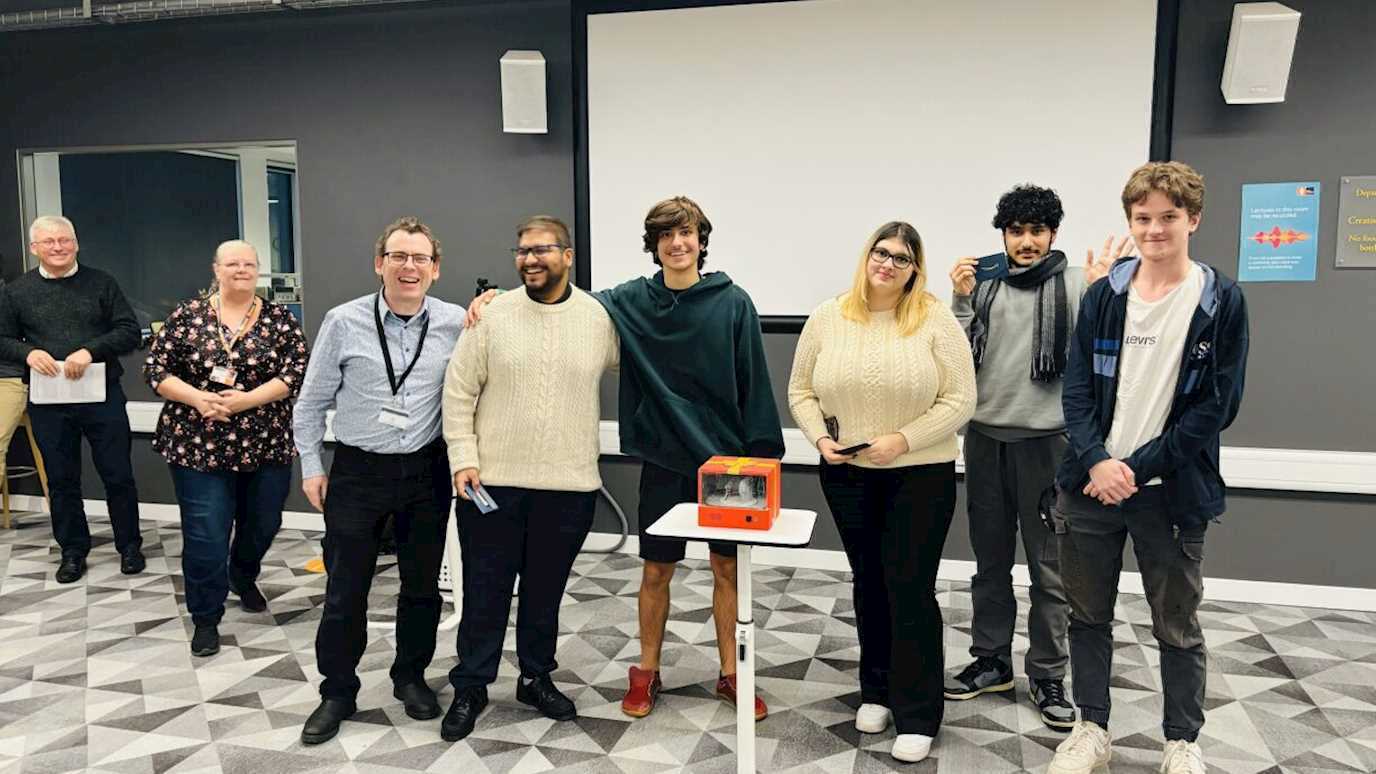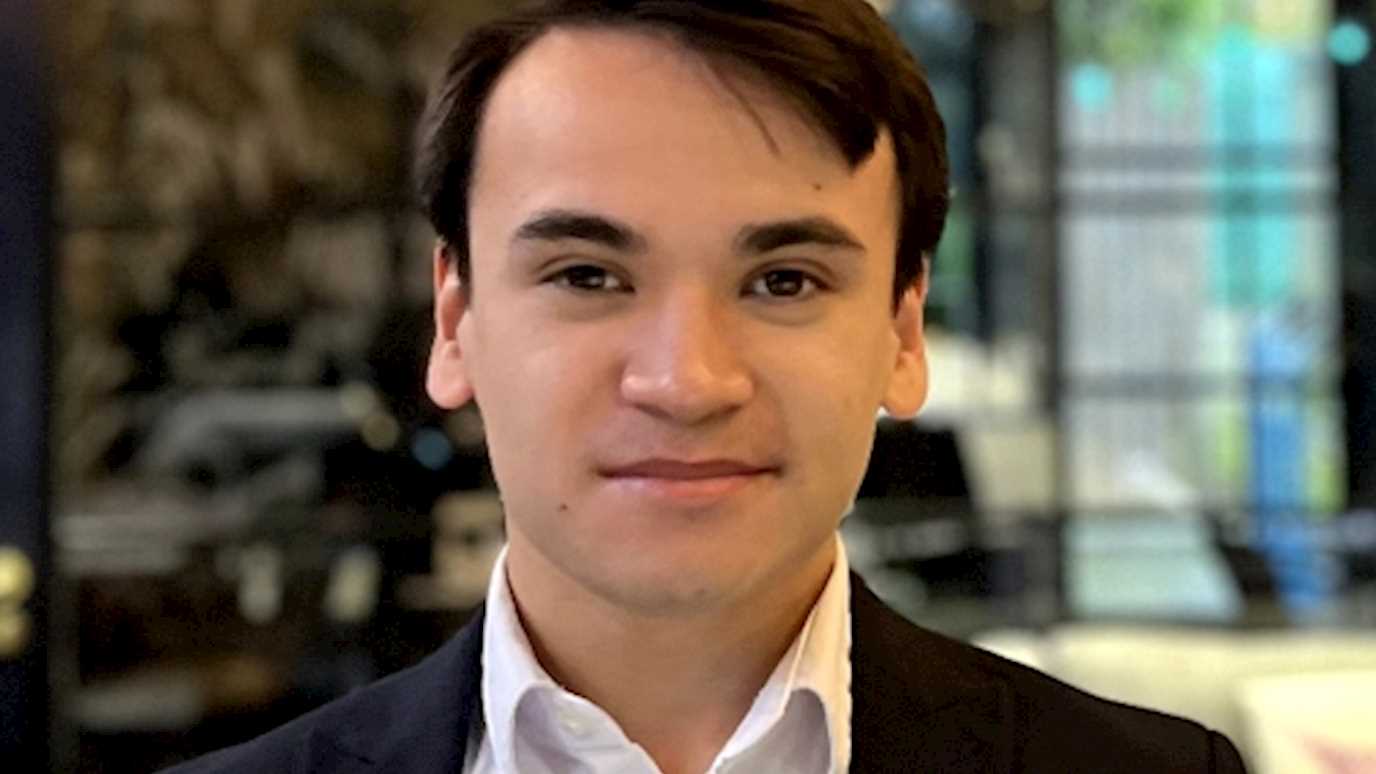Our electronic engineering student entrepreneurs have once again risen to the challenge of pitching their ideas and showcasing exciting product concepts to an industry panel to win the coveted Dragon’s Den trophy for their team.

Our first- and second-year students work in small groups over terms one and two to prepare for these Dragon’s Den contests as part of their degree courses in the Electronic Engineering Department. A different project brief is proposed each term to enable students to explore the principles of embedded systems, working with microcontrollers, FPGA and 3D printing, PCB manufacturing. For their most recent project, our first-year brief was to design and build a ‘baby soother’ complete with lights and sound.
The winning team, who built a UFO design for their baby soother, comprised Ayaan Malik, Hari Arumugam, Sukhman Singh, Naomi Parfitt, Callum Edmonds (pictured above with Professor David Howard).
The culmination of the projects is when student teams present their design concepts to the Dragons who are selected from our Industrial Advisory Board. Representing industry professional from companies such as BAE Systems, Renasas among others, we are enormously grateful to these individuals who are able to offer advice on how our teams of students might work in industry and improve their projects going forward.
Steve Alty, Head of the Department of Electronic Engineering commented,
“Our students really enjoy these team projects as it gives them an opportunity to express their creativity and push the envelope of their academic experience. Projects vary each year and students amaze us with their ingenuity every time!”
Team working skills are paramount in the Electronic Engineering Department, recognising that in their future careers working as a professional engineer our students will have to fit into a diverse team of colleagues, possibly from different disciplines such as mechanical engineering or material science or production engineering. Employers value these skills above all as it is vital for productivity.
























